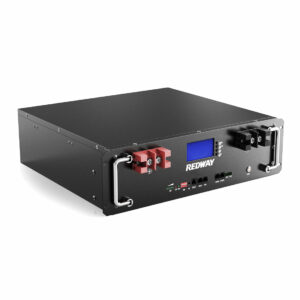What Is A UPS Server And Why Is It Important For Batteries?
LiFePO4 batteries achieve optimal charging at 3.65V/cell using CC-CV method. Terminate at 100% SOC and avoid temperatures above 45°C (113°F). Always use a dedicated LiFePO4 charger to prevent overvoltage damage.
What voltage range is safe for LiFePO4 charging?
LiFePO4 operates safely between 2.5V-3.65V/cell. For 12V systems, the 14.6V upper limit prevents overcharging. Stay below 3.8V/cell to avoid catastrophic failure.
LiFePO4 cells tolerate tight voltage margins. The 14.6V upper limit for 12V packs (4 cells in series) ensures balanced charging. Practically speaking, exceeding 3.65V/cell accelerates electrolyte breakdown—imagine revving an engine past its redline. Why risk permanent damage when modern chargers auto-terminate? For cold environments, self-heating batteries maintain efficiency below 0°C. Pro Tip: Use a voltage alarm during bulk charging phases for real-time monitoring.
| Battery Type | Safe Voltage Range | Overcharge Risk |
|---|---|---|
| LiFePO4 | 2.5-3.65V/cell | Low with BMS |
| Lead-Acid | 1.8-2.4V/cell | High |
| Li-ion | 3.0-4.2V/cell | Extreme |

How does temperature impact LiFePO4 charging?
Ideal charging occurs at 10°C-45°C (50°F-113°F). Below freezing, use self-heating systems; above 45°C, thermal runaway risks spike.
Beyond voltage considerations, temperature dictates charge acceptance. At -10°C, charge current should drop to 0.2C—like trying to pour honey in winter. Ever seen a battery swell? That’s thermal runaway from high temps overpowering the BMS. Pro Tip: Install temperature sensors directly on cells, not just the casing. For solar setups in deserts, active cooling maintains efficiency. But what if your battery sits in a hot garage? Reduce charge voltage by 3mV/°C above 25°C—a simple firmware tweak most users ignore.
| Temperature | Charge Rate | Efficiency |
|---|---|---|
| 0°C | 0.2C (with heating) | 75% |
| 25°C | 1C | 99% |
| 50°C | 0.5C | 85% |
Why avoid lead-acid chargers for LiFePO4?
Lead-acid chargers use float stages that overcharge LiFePO4. Their lower voltage thresholds fail to fully utilize capacity.
Practically speaking, lead-acid chargers are like using a sledgehammer for watch repair. Their absorption phase at 14.4V works for flooded batteries but leaves LiFePO4 undercharged. Worse, the equalization phase (15V+) causes catastrophic overvoltage. Did you know 90% of “mystery” LiFePO4 failures trace to mismatched chargers? Always verify your charger’s bulk/absorb/float voltages match LiFePO4 specs. Pro Tip: For RV conversions, programmable DC-DC chargers adapt to alternator inputs safely.
FAQs
How often should LiFePO4 be fully charged?
Perform monthly full cycles to recalibrate the BMS, but daily partial charging (80%) extends lifespan.
Can I use solar controllers for LiFePO4?
Only with LiFePO4 presets. PWM controllers require voltage calibration to avoid overcharging.



